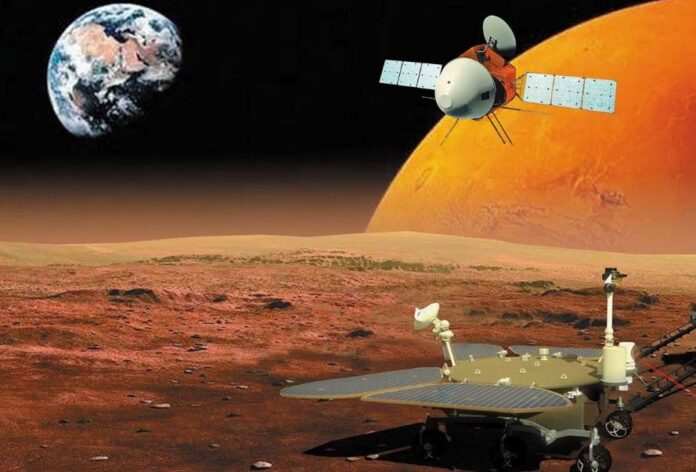China’s ambitious effort to bring samples from Mars to Earth could begin as early as 2028, according to a senior space official. The Tianwen-3 mission, originally slated for 2030, is now expected to involve two launches “around 2028,” said Liu Jizhong, the chief mission designer, during a recent deep-space exploration event in Anhui province.
This accelerated timeline marks a significant step forward for China’s Mars program, with the new target reviving a 2022 plan that would see Martian samples returned to Earth by 2031. The revised schedule is part of China’s broader push to solidify its position as a leading space power.
Also Read: China Ends Foreign Adoptions After Three Decades
The timeline for the mission has shifted in recent years, but the current 2028 target reflects China’s growing confidence in its capabilities for deep-space exploration.
Mars has long captivated scientists as a key research destination, holding the potential to reveal crucial information about the existence of life beyond Earth and the origins of our solar system.
In 2021, China’s Tianwen-1 mission marked a significant achievement in planetary exploration. The mission, whose name translates to “questions to heaven,” successfully placed the Zhurong rover on Mars, making China the third country to land on the planet after the Soviet Union and the United States. Zhurong touched down on May 15, 2021, in Utopia Planitia, a large plain more than 30 million miles from Earth.
The rover’s primary objectives included searching for evidence of ancient life and studying Mars’ minerals, environment, and the distribution of water and ice. Initial data from Zhurong’s exploration of the Utopia Planitia basin suggested that the area had once contained water, challenging previous assumptions that Mars was cold and dry tens of millions of years ago, according to a 2022 study.
The China National Space Administration (CNSA) released striking images from the mission, captured by a separable camera deployed by Zhurong. These photos showed both the rover and its lander on the Martian surface. Though designed to operate for 90 days, Zhurong exceeded expectations by continuing its mission for 358 days and traveling over 1,921 meters (6,302 feet). The rover entered hibernation in May 2022, with Chinese scientists citing an “unpredictable accumulation” of dust as the cause.
The United States first reached Mars in 1976 with NASA’s Viking 1 mission, whose lander operated for more than six years, far surpassing the Soviet Union’s Mars 3 spacecraft, which landed in 1971 but transmitted signals for only 20 seconds. NASA’s most recent landing came in 2021, when the Perseverance rover arrived in the Jezero Crater. Perseverance has since been collecting samples to be returned to Earth in a future mission.
NASA’s Mars sample return mission, described by NASA chief Bill Nelson as “one of the most complex missions” ever undertaken by the agency, faces significant challenges. In April, NASA revealed it was seeking innovative ways to bring back Martian samples after costs ballooned to an estimated $11 billion. The mission is now targeting a return date in 2040, with NASA backing several 90-day studies to find more cost-effective and faster methods.
Key Points:
- China’s Historic Mars Mission: In 2021, China became the third country to land on Mars, deploying the Zhurong rover as part of its Tianwen-1 mission, which landed in the Utopia Planitia region.
- Zhurong Rover’s Mission: The rover’s goals included searching for signs of ancient life, studying minerals, and investigating water and ice distribution. Data suggested the Utopia Planitia basin once contained water.
- Rover’s Extended Operation: Zhurong was designed for a 90-day mission but continued for 358 days, traveling over 1,921 meters before entering hibernation in May 2022 due to dust accumulation.
- US Mars Exploration: The US first landed on Mars in 1976 with NASA’s Viking 1 mission. NASA’s latest mission, Perseverance, landed in the Jezero Crater in 2021 and is currently collecting samples for return to Earth.
- NASA’s Mars Sample Return Challenge: NASA’s planned Mars sample return mission faces cost overruns of up to $11 billion and is targeting a return date of 2040. The agency is exploring more affordable and faster retrieval methods.



